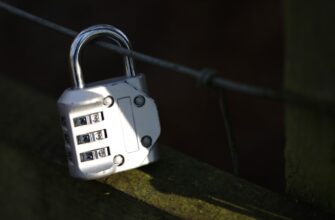- Why Air-Gapped Wallets Are Essential for Crypto Anonymity
- Understanding Air-Gapped Wallet Fundamentals
- Step-by-Step: Anonymizing Your Air-Gapped Wallet
- Advanced Anonymity Best Practices
- FAQ: Air-Gapped Wallet Anonymization
- Can authorities trace an air-gapped wallet?
- Is Wi-Fi dangerous for air-gapped setups?
- How often should I rotate wallets?
- Do hardware wallets guarantee anonymity?
- Can I anonymize existing wallet funds?
Why Air-Gapped Wallets Are Essential for Crypto Anonymity
In an era of increasing digital surveillance, anonymizing your cryptocurrency holdings is critical for financial privacy. Air-gapped wallets—devices never connected to the internet—provide the highest security against remote hacks. By combining air-gapped storage with deliberate anonymization techniques, you create a virtually untraceable vault for your digital assets. This guide walks you through a practical, step-by-step process to achieve maximum anonymity while leveraging air-gapped technology.
Understanding Air-Gapped Wallet Fundamentals
An air-gapped wallet operates in complete isolation from online networks. Transactions are signed offline using QR codes or USB drives, eliminating exposure to malware or interception. Popular options include hardware wallets like Ledger or Trezor configured offline, or DIY solutions using Raspberry Pi. The core principle: private keys never touch internet-connected devices. This physical barrier blocks remote attacks but doesn’t automatically anonymize transactions—which requires additional steps.
Step-by-Step: Anonymizing Your Air-Gapped Wallet
- Acquire Hardware Anonymously
Purchase your wallet with cash from local retailers. Avoid online orders linked to your identity. Factory reset the device before use. - Generate Keys Offline
Set up the wallet in a secure, offline environment. Never use pre-configured devices. Write recovery phrases on non-digital media (e.g., steel plates). - Fund via Privacy Coins or Mixers
Transfer crypto using privacy-focused coins like Monero or Zcash. For Bitcoin/Ethereum, use decentralized mixers (e.g., Tornado Cash) before sending to your air-gapped address. - Broadcast Transactions Securely
Create unsigned transactions on an online device. Transfer via QR code to your air-gapped wallet for signing. Scan the signed transaction back to the online device for blockchain broadcast. - Isolate Metadata
Use separate devices for transaction creation and broadcasting. Never reuse addresses. Connect via public Wi-Fi (using VPN + Tor) when broadcasting.
Advanced Anonymity Best Practices
- Combine with hardware-based full nodes for private transaction verification
- Regularly rotate wallet addresses using Hierarchical Deterministic (HD) wallets
- Store backups in geographically dispersed physical locations
- Use Faraday bags to block wireless signals during wallet operations
- Verify all software/firmware via checksums before offline installation
FAQ: Air-Gapped Wallet Anonymization
Can authorities trace an air-gapped wallet?
While transactions are visible on-chain, proper anonymization (e.g., coin mixing, non-KYC funding) makes linking wallets to identities extremely difficult without physical access to your device.
Is Wi-Fi dangerous for air-gapped setups?
Absolutely. Even brief connections compromise security. Maintain physical isolation—use QR codes or USB drives for data transfer instead.
How often should I rotate wallets?
Rotate receiving addresses for every transaction. Consider full wallet migration every 6-12 months for high-value holdings.
Do hardware wallets guarantee anonymity?
No—anonymity depends on usage. Hardware provides security; anonymization requires deliberate practices like those in this guide.
Can I anonymize existing wallet funds?
Yes. Transfer holdings through privacy tools (mixers/coins) to a new air-gapped wallet following the steps above.








